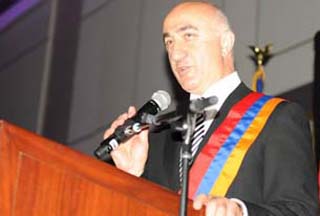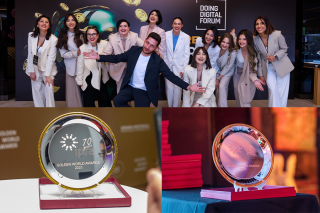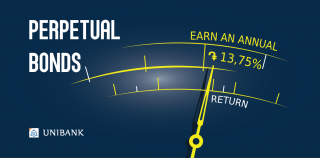
Gagik Gevorgyan: We want Armenia become an important center for jewelry production

Below is an interview with Gagik Gevorgyan, president of the Armenian Jewelers’ Association and the Russian Jewelers’ Guild Association.
-What is the status of the project for creation of a free trade zone for jewelry? Has the problem of area acquisition been solved?
-Currently the Armenian Jewelers’ Association (AJA) is implementing a number of projects, and the largest one is the one you said – creation of a Jewelry Free Trade Zone in Armenia. Now we are finalizing documents for purchase of a building. The building is located in a panoramic area in Hrazdan canyon, at Kashegorts 70. We will start reconstruction project soon and after finishing the interior works, we will provide premises to companies from different countries. I think that during October, when the association will organize its third annual Yerevan Show-2013 exhibition, participants and guests will be enabled to visit the area of the building.
-What will be the benefit of the free trade one for Armenia?
-In the long-term run this project will boost not only jewelry business in Armenia, but its economy as well. The free trade zone project that was approved by the Armenian government will become a powerful source of attracting financial inflow into gold and diamond reproduction areas from other countries, creation of jobs, and boost the sector due to investment in technologies. These improvements will help us make Armenia one of the centers of this sector in the world.
-What is happening to the project of opening an Armenian jewelry arts museum?
-We still have that project in mind but currently we are focusing all our efforts on large projects such as the free trade zone and the international Yerevan Show. However, there are some improvements in that direction. AJA, a foundation recently registered in Switzerland, is researching the Armenian heritage in jewelry and they have collected a lot of documents and facts about the important positions and masterpieces of Armenian jewelers. The foundation is also planning to organize training courses for Armenian jewelers in renown institutions in other countries. My two business partners, Pierre Akkeyan (president of the foundation) from Canada and Vardges Knajyan from Switzerland have helped me to establish that foundation. All collected information will be made public in the future. We have signed an agreement with the ethnography museum of Russia’s St. Petersburg to publish an album dedicated to the arts collection of Armenians of Vaspourakan, which are kept in archives and would not be made public if our researches did not find. Those are unique pieces of gold jewelry, clothing, pictures of Van, which have been brought by the Russian renown scientist Alexander Miller after his visit to Van in 1916.
-What do you think about the tax collection policy? What problems would you highlight?
-In any legislation it is possible to find both positive and negative things, as well as room for improvement. If you have a goal and that goal is national, you can always find room for work and development. I do not want to go into details, but I can say that the existing legislation is liberal and in line with many developed countries. In a recent government session a development strategy for the sector was approved for 2013-2020. The strategy establishes policies for developing gold jewelry, diamond and watch production in Armenia. It establishes policies for improving the legislation, providing affordable raw materials, recovering labour resources and supporting export.
-Is Armenia’s jewelry production staying behind global trends? Is it developed? Are our jewelers qualified and known in other countries.
-There are several countries in the world that are famous with their jewelry production quality level, and Armenia is one of them. Gaetano Cavalieri, president of CIBJO said this during an event dedicated to the 15th anniversary of AJA. He believes Armenian jewelers have a high level of professional quality work and great potential. Mr. Cavalieri also said that Armenia’s geographic location has a potential to connect Asia and Europe, which itself is a great potential.
By the way, Armenia is the only country in the world where the state celebrates the Jeweler’s Day, which is the last Sunday of October. This is when our organization holds Yerevan Show. There is great interest to this show and this year we are hosting people from 25 countries.
We attach importance to educating skilled jewelers, and for this purpose AJA has signed a cooperation memo with the ministry of education of Armenia. The goal of this policy is boosting this sector and educating highly qualified specialists in Armenia. The memo establishes policies and gives recommendations for that purpose such as investment in technologies, education in colleges and universities, as well as participation in conferences.
-What do you think about the current trends and directions of jewelry production development in the world?
-The financial crisis has significantly affected the sector of jewelry production, which is sensitive to any market fluctuations. Currently the sector is growing in the world, including in Armenia as well. Every crisis is followed by growth, thus AJA is paying more attention to education and professional growth now. Technologies are very important in modern jewelry production. Even nanotechnologies are used. Gagik Vardanyan, a member of AJA from Los-Angeles, is working on nano-turquoise project and is trying to do a similar project in Armenia. Even though technologies are important, the sector cannot exist without the craft and professional hand of masters.
AJA has established several education centers in Armenia, Artsakh and Russia for the purpose of education youth and delivering skills and knowledge of elder generations to younger ones. Some of them will exhibit their works at Yerevan Show. Better attention to youth enables many talented young professionals grow. Our experience shows that if there are good conditions for youth, our young professionals will shine in the world. I strongly believe in that.
By Gayane Khachatryan























